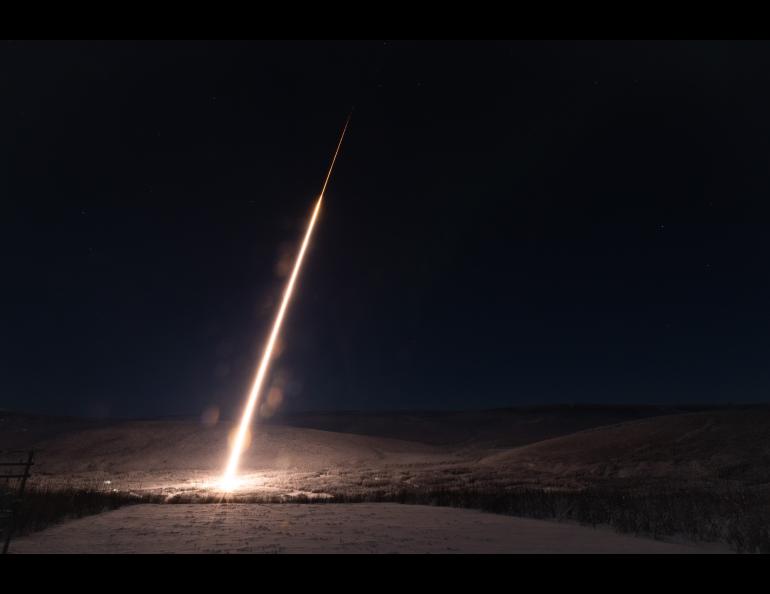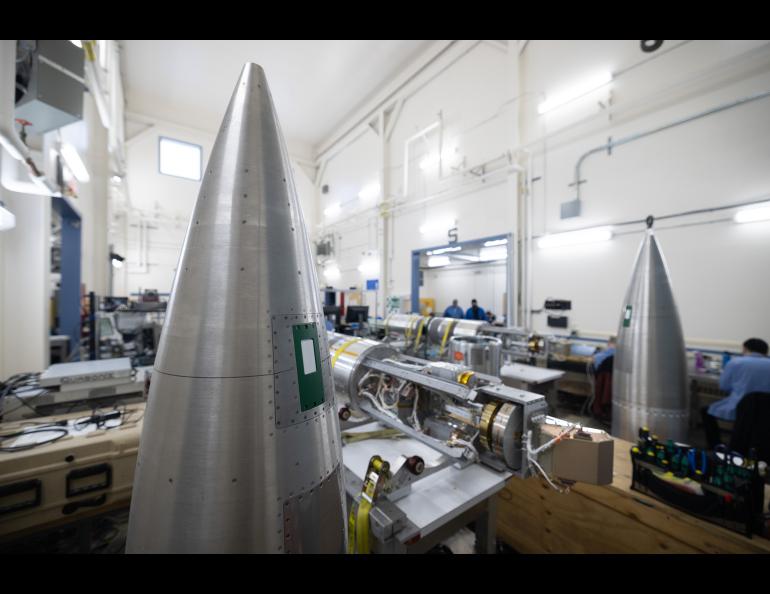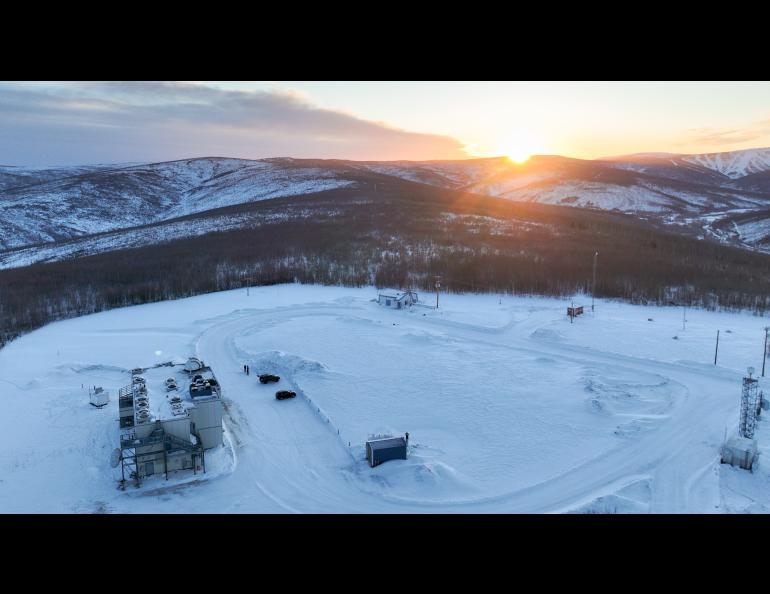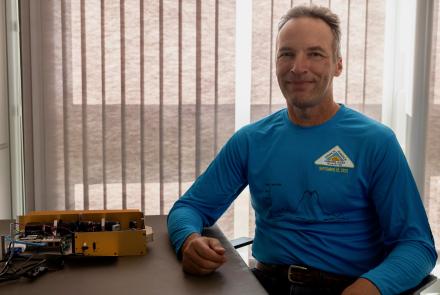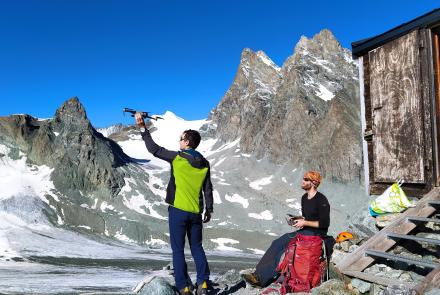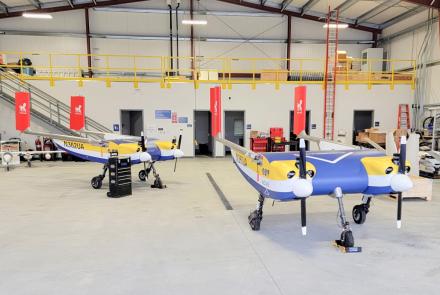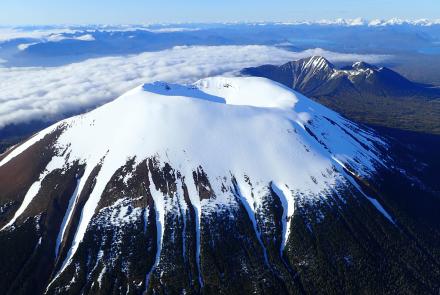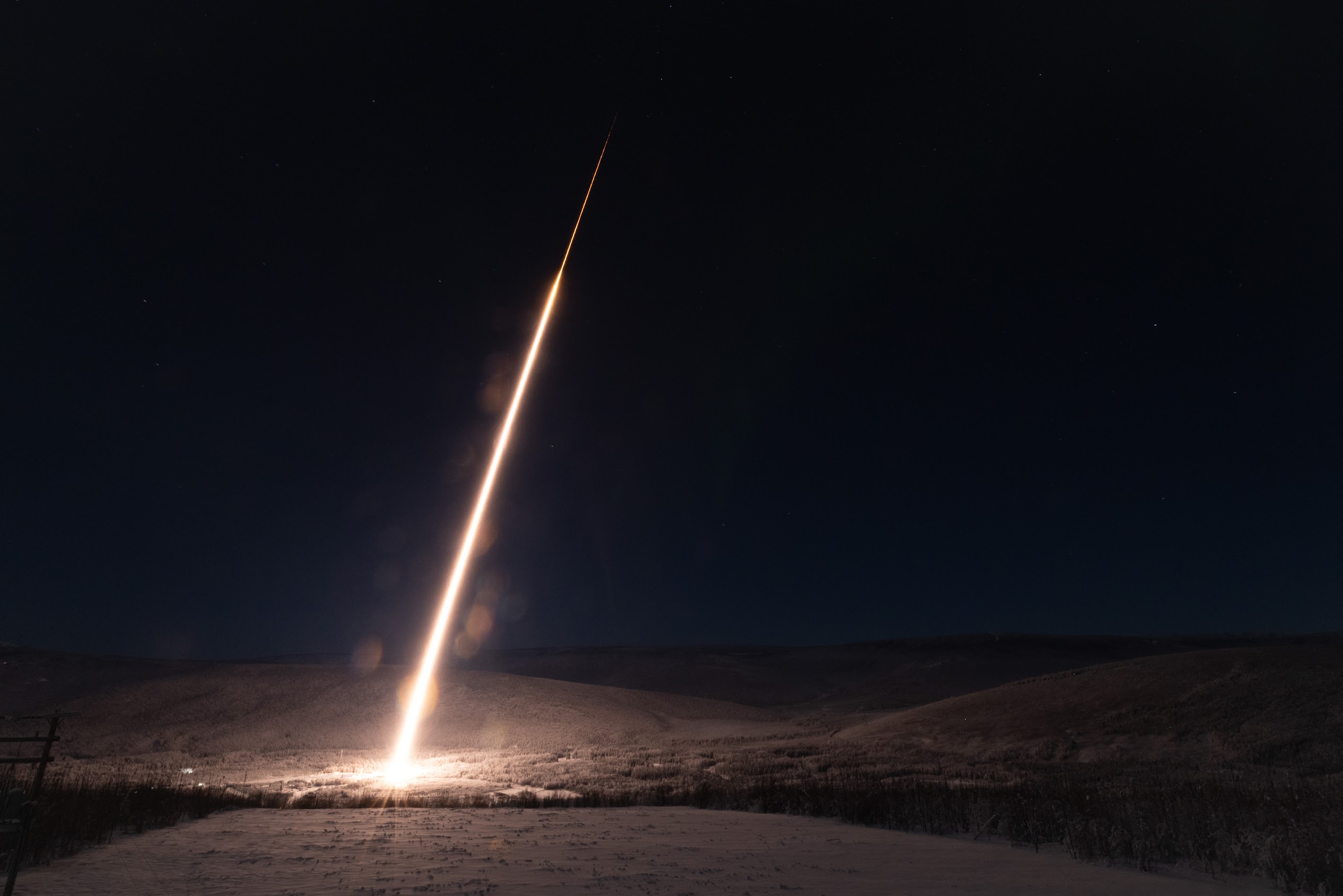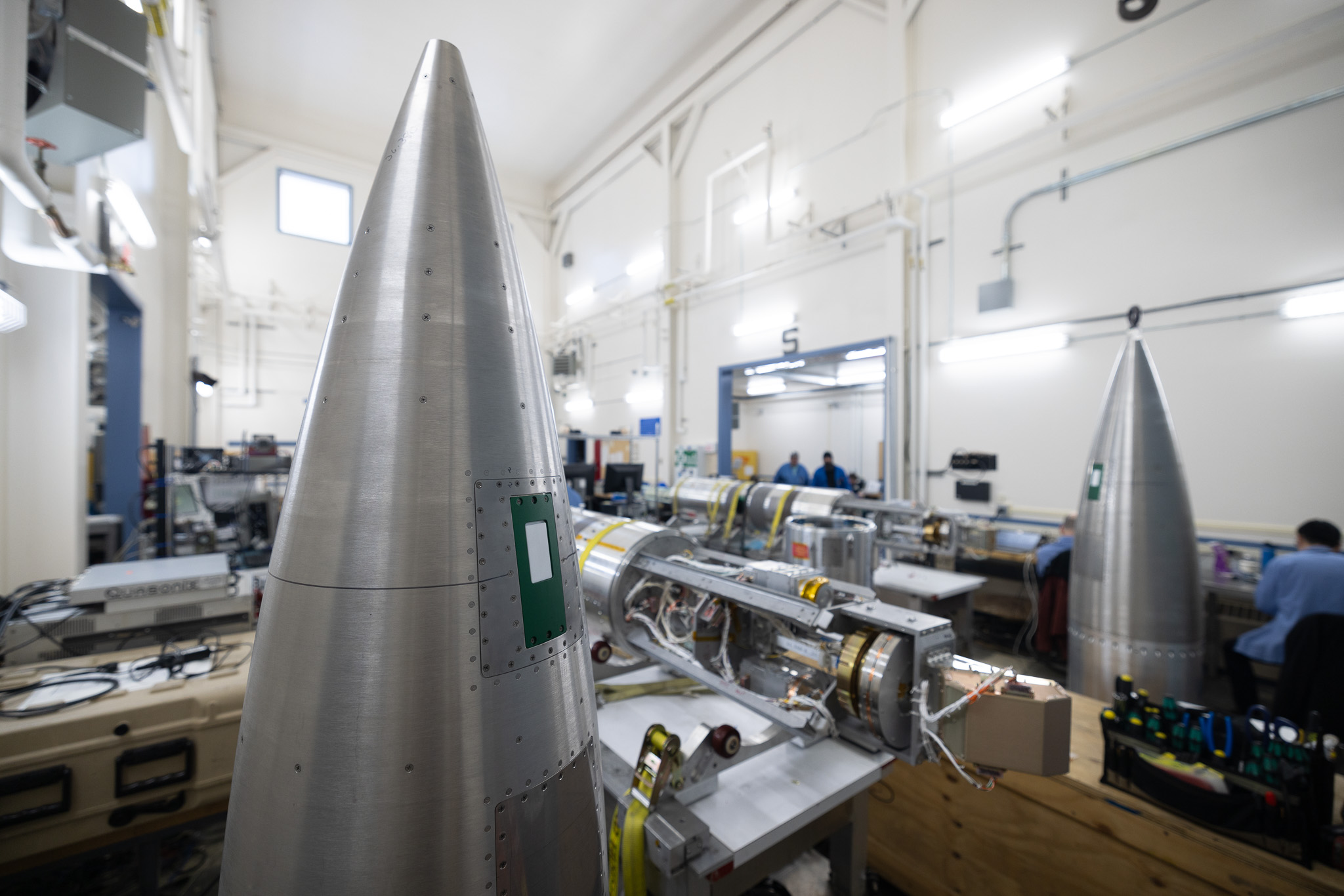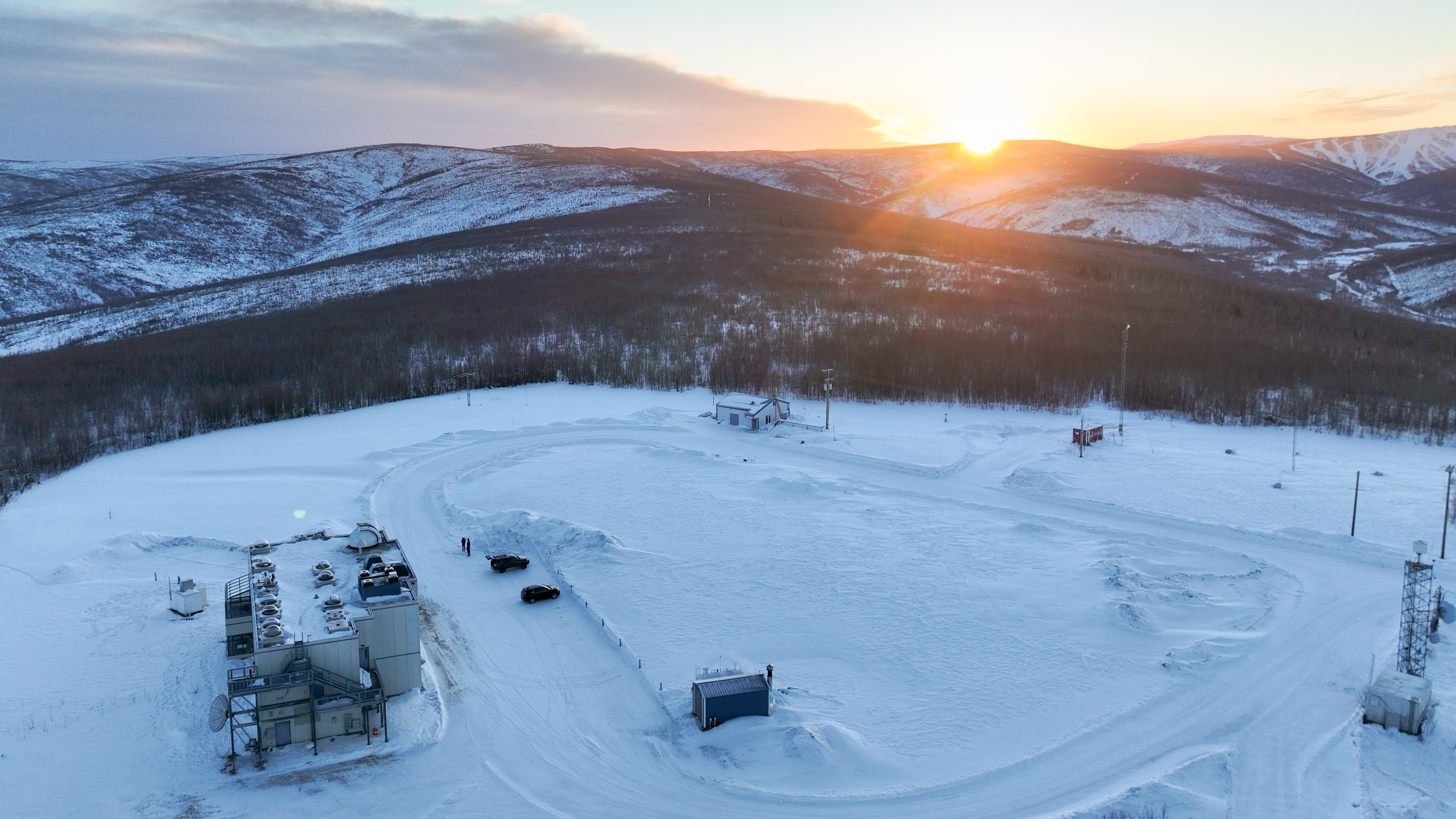Two NASA rockets successfully launched from Poker Flat Research Range this month in search of answers about forms of rapid auroral behavior. The second of those launched Saturday, the final day of the two-week launch period when acceptable conditions developed.
A third rocket, with a mission of researching another type of auroral activity, was not launched because the correct science conditions, known as a “black aurora” did not materialize.
Scientists for both missions needed the aurora to produce the desired effect and also required clear skies at a Geophysical Institute observing site in Venetie, on the Teedriinjik (formerly Chandalar) River north of the Arctic Circle. Clouds and snow blocked the view for most of the launch window.
Weather also caused problems at Poker Flat, with days of unseasonably warm weather that melted snow followed by icy conditions at the launch site when the temperature fell. Ice froze wind instruments on the 150-foot tower, blocking critical information needed for launch.
The two rockets that did launch were for the Ground Imaging to Rocket investigation of Auroral Fast Features mission, led by principal investigator Robert Michell of NASA’s Goddard Space Flight Center.
One rocket gathered information about flickering aurora, and the other gathered data about fast-pulsating aurora. They are the fastest observable auroral variations.
“The instruments performed as they were designed to,” Michell said. “The preliminary data that we have looked at so far are good, and we have good measurements from the ground-based data.”
“We had good aurora for both launches,” he added. “There were definitely electrons out there that we were measuring, so that was exciting.”
Flickering auroras are fast, localized and associated with higher-frequency wave interactions. Fast-pulsating auroras are slower, broader and tied to lower-frequency plasma wave phenomena.
The first in the rocket tandem launched at 10:07 p.m. Feb. 1. The second launched at 11:35 p.m. Feb. 8.
Launch of the third rocket, for the Black and Diffuse Aurora Science Surveyor mission, will likely be rescheduled, said principal investigator Marilia Samara, also of Goddard Space Flight Center.
That research seeks to understand the processes that create an optical aurora variation known as the black aurora, which to viewers seems to cut out sections of auroral light. That type of aurora occurs due to a decrease in particle precipitation in some regions of a visible aurora.
“We cooperated with nature as best we could, but sometimes the conditions nature sets are just not the conditions that would produce the outcome a scientist might want,” Samara said. “That's life as a scientist.”
“There's nature in terms of what aurora will show for you, and there's nature in terms of the conditions for launching the rocket,” she said.
Samara believes the launch will be rescheduled.
“We are confident it will happen,” she said.
Other agencies and institutions involved in the two missions include the Air Force Academy; UAF; Dartmouth College; University of California, Berkeley; University of Maryland; and Catholic University.
UAF participants include professor Peter Delamere of the Geophysical Institute and College of Natural Science and Mathematics, Poker Flat chief scientist Don Hampton, Professor Emeritus Hans Nielsen, research professor Paul Bernhardt and graduate student researchers.
The University of Alaska Fairbanks Geophysical Institute owns Poker Flat, located at Mile 30 Steese Highway, and operates it under a contract with NASA’s Wallops Flight Facility, which is part of the Goddard Space Flight Center.
Poker Flat will also be the site of a three-rocket launch in late March. That mission, led by UAF professor Mark Conde, will study the density, wind and composition perturbations that occur in Earth's far upper atmosphere during auroral substorms.
